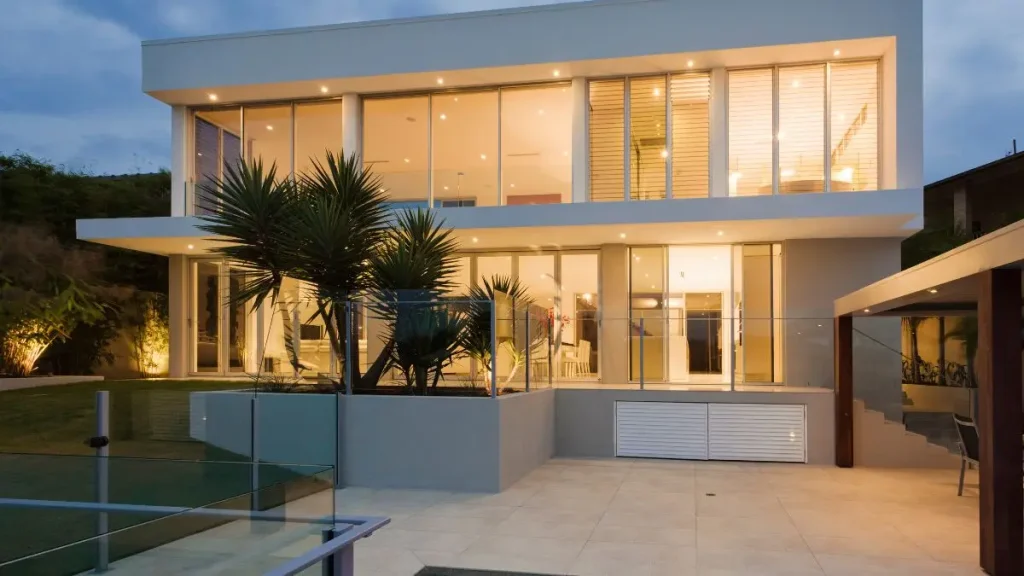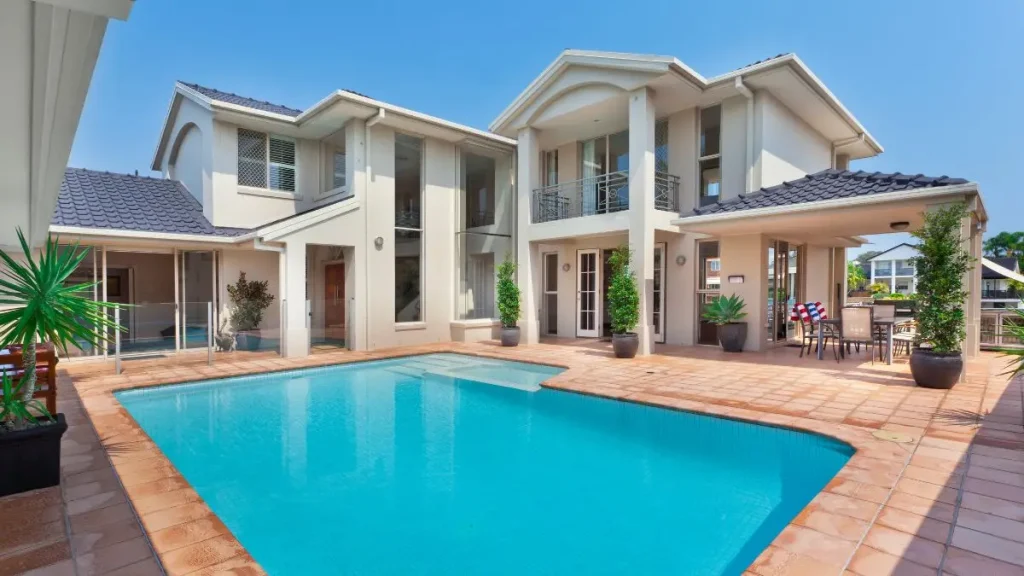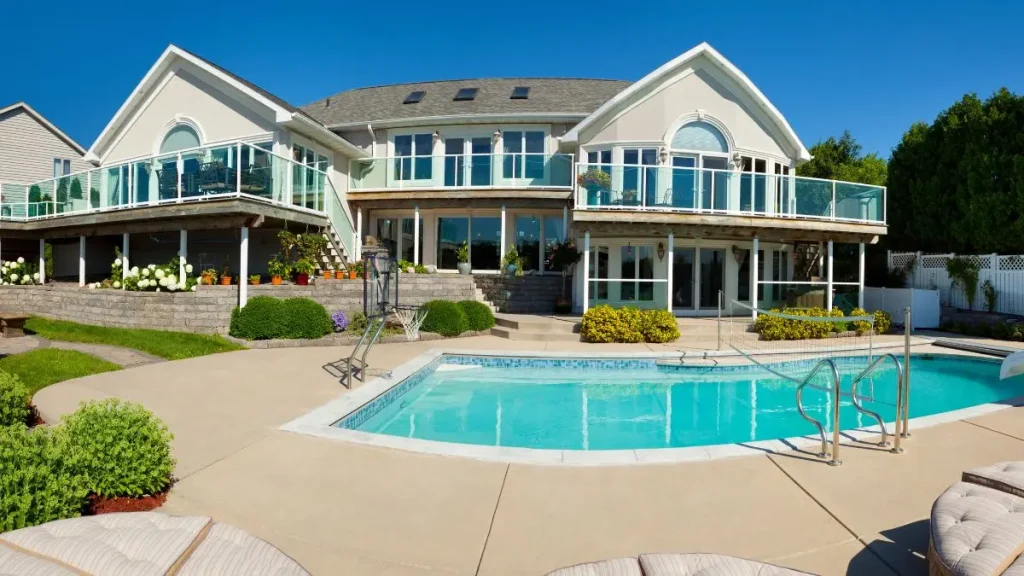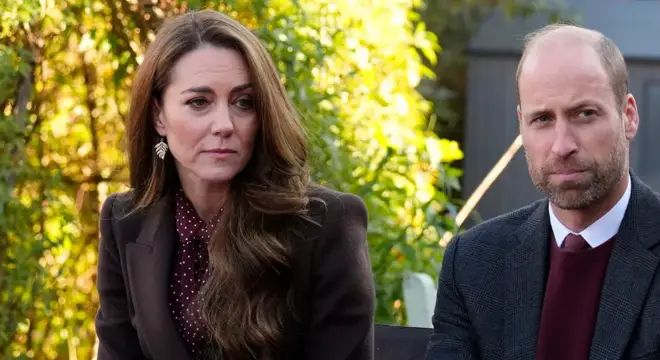A Look Inside Kim Kardashian’s Massive $115M Property Portfolio
I still remember the first time I saw photos of Kim’s early Beverly Grove condo from 2005 — it looked nothing like the minimalist, cream-toned spaces we associate with her today. Back then, she was building her name, not a property empire. Fast-forward less than two decades, and that starter condo has snowballed into one of the most closely watched celebrity real estate portfolios in the world.
Here’s the thing — Kim’s property story isn’t just a list of expensive houses. It’s a timeline of personal milestones, brand evolution, and strategic plays that most people overlook. The $115 million figure you keep seeing online? That’s only the surface. The real fascination is in how each purchase — from the Hidden Hills compound to the Malibu bluff estate — fits into a bigger picture.
If you map it out, you can see the shift:
From accessible LA neighborhoods… to gated enclaves where privacy is worth millions. From buying lived-in homes… to commissioning custom projects with world-class architects. It’s a masterclass in turning lifestyle into an investment strategy.
And that’s why I want to take you through this journey the way I see it — as a series of smart, calculated moves that just happen to be wrapped in marble floors and ocean views. By the end, you might find yourself thinking less about the price tags… and more about the mindset behind them.
So tell me — when you look at Kim’s rise from that modest condo to a $70 million oceanfront villa, do you see it as luck, timing, or pure strategy?
Hidden Hills — The Heart of the Empire
If there’s one place that anchors Kim Kardashian’s entire property portfolio, it’s Hidden Hills. When she and Kanye West first bought the mansion in 2014 for around $20 million, it wasn’t just a move up the celebrity real estate ladder — it was a declaration.
This wasn’t the flashy, gilded kind of celebrity mansion you see in reality TV. It was an empty canvas, waiting to be transformed into something deeply personal.
They worked with Belgian designer Axel Vervoordt to strip the home down to its essence. White walls, natural light, wide hallways — every detail designed to make you slow down and breathe. Kim often calls it a “minimal monastery,” and standing in those spaces, you’d never guess it sits just 30 minutes from the chaos of Los Angeles.
Over the years, she quietly bought the neighboring properties. One belonged to Lisa Marie Presley, another to a long-time Hidden Hills resident. In both cases, she wasn’t buying them to rent out or flip — she was buying them for privacy.
Imagine adding acres of buffer space around your home just so you can walk in your garden without worrying about drones or telephoto lenses.
And this isn’t just my take. Robb Report has called Hidden Hills the “crown jewel” of her portfolio — not because of its size alone, but because of the way it reflects her life philosophy. It’s a fortress, yes, but also a retreat. If you’re building your own real estate dream, this is the kind of move that separates collectors from strategists.
It reminds me a bit of when Brad Pitt quietly secured his new Los Angeles mansion — not flashy, but deeply personal in style.
La Quinta — The Dream That’s Still Waiting

Most celebrities buy homes that are already move-in ready. Kim didn’t take that route with La Quinta. In 2019, she bought a $6.3 million plot in the Madison Club, a gated golf community known for hosting CEOs, sports legends, and a few very discreet A-listers.
But instead of hiring a regular architect, she went to Tadao Ando — the Japanese master known for sculpting concrete into spiritual spaces.
The design is rumored to stretch across 42,000 square feet, with vast concrete walls framing desert views, a pool that mirrors the sky, and spaces that feel more like an art museum than a vacation home. I’ve seen concept photos floating around online, and they’re nothing like the glass-and-steel mansions you see in Palm Springs.
But here’s the twist — the project has stalled. Since 2022, progress has slowed due to permit issues and construction challenges. Many people would’ve sold the plot and moved on. Kim hasn’t. That patience tells me she’s not in this for quick wins. She wants this home done right, even if it means waiting years.
And honestly, I respect that. Sometimes the most valuable thing in a portfolio isn’t the asset you already have — it’s the vision you’re committed to bringing to life.
Idaho — The Quiet Refuge
Not every move in Kim’s portfolio makes headlines, and that’s exactly why the Idaho property fascinates me. In 2020, she quietly purchased a lakeside retreat in Coeur d’Alene — the kind of place you’d expect a reclusive novelist to own, not one of the most photographed women in the world.
From the outside, it’s rustic — wood beams, stone chimneys, decks that hang over the water. Inside, it’s cozy but still minimalist, with huge windows framing the lake and mountains. You can almost hear the silence in the photos.
Then came the real surprise — Kim bought two more plots nearby. No press releases, no Instagram tours. Just quiet acquisitions. Was she planning to build a larger compound? Create a family retreat away from paparazzi? Or maybe she just wanted to ensure no one else could build too close. Whatever the reason, it’s a classic long-term privacy play.
For you and me, this is a reminder that not every investment needs to scream “look at me.” Sometimes the smartest move is the one no one’s talking about.
Malibu — The Oceanfront Showstopper
Even in Kim’s portfolio, the Malibu villa stands apart. In 2022, she bought the Encinal Bluffs estate for more than $70 million — the highest price ever paid for a Malibu home that year. Set on 3.2 acres, the property offers more than just views. It’s got direct beach access, a tennis court, and a Mediterranean design that feels timeless rather than trendy.
Malibu isn’t just about beauty — it’s about prestige. There are only so many oceanfront estates here, and even fewer with the kind of privacy this one offers. For Kim, it’s a strategic westward expansion from her Hidden Hills base — a way to access the beach without sacrificing security.
She’s already begun remodeling, bringing her signature minimalist aesthetic to the interiors. If you’ve followed her home tours, you know she’s not afraid to strip a space down to its bones and rebuild it around light, air, and texture. The result here will likely be a home that blends ocean serenity with the same calm she’s created inland.
If you’ve ever thought of buying a second home, Malibu is a masterclass in location value. You’re not just paying for the house — you’re paying for the land, the views, and the scarcity.
If you had the choice between a sprawling hillside estate and a private oceanfront villa, which one would you pick? Drop your thoughts below — I’d love to hear your take.
The Design DNA — Minimalism Made Personal

Walk into any of Kim’s homes and you’ll feel it immediately — space, light, quiet. It’s not an accident. Across all her properties, from Hidden Hills to Idaho, there’s a clear design DNA. Beige tones. Open floor plans. Furniture that feels sculptural but never cluttered.
Minimalism gets a bad rap sometimes — people think it’s cold or impractical. But in Kim’s case, it’s deeply personal. She’s raising four kids, running multiple businesses, living under constant public attention. These spaces are designed to give her mental clarity.
And here’s what I think is most important: she’s consistent. Many celebrity homes are a mix of styles because they’re bought for status or impulse. Kim’s portfolio feels curated. Whether it’s a lakeside cabin or a Malibu villa, the same principles guide the design. That consistency is a brand in itself — and in real estate, a clear brand builds value over time.
I often share quick behind-the-scenes updates and design finds through my WhatsApp updates — it’s where I drop things that don’t always make it into full articles but are too good to miss.
Strategic Location Choices
Kim’s not buying at random. When you map her portfolio — Hidden Hills, Malibu, La Quinta, Idaho — you see a pattern. Every location is either:
- A safe, private retreat.
- A high-prestige market with long-term appreciation.
Hidden Hills gives her privacy and proximity to Los Angeles. Malibu offers scarcity-driven coastal value. La Quinta taps into ultra-luxury golf community demand. Idaho gives her total seclusion with a side of untouched nature.
For me, this is a big takeaway: your portfolio doesn’t have to be huge, but every property should have a reason for being there. Kim’s isn’t just collecting “pretty houses” — each one has a strategic role. And if you’re investing, you need to ask the same question: Why this place, and how will it work for me long term?
The same “location as a statement” approach was clear when Liam Neeson sold his New York penthouse during a major life change.
Resale Value and Market Timing

Kim isn’t known for flipping houses quickly, but she does make moves when it makes sense. Back in 2017, she and Kanye sold one of their Bel-Air mansions for $17.8 million — more than double what they paid. That wasn’t luck. It was timing plus design. They had remodeled it in their signature minimalist style just as that aesthetic started dominating Instagram and Pinterest.
The same logic applies to Malibu. Even if she never plans to sell, buying into a market that consistently holds or increases in value gives her leverage. If she needed to, she could liquidate that property and still make a profit because of scarcity and location demand.
And here’s the key for you — even if you’re not buying at $70 million, you should be thinking about exit strategies before you buy. A property’s value isn’t just in how much you love it today, but how well it will sell when you’re ready to move on.
We’ve seen similar market-savvy moves before, like when ex-NBA star Zach Randolph sold his fire-resistant L.A. home after a strategic price drop.
Lessons You Can Apply
You might not have a $115 million real estate empire, but Kim’s approach offers lessons anyone can use.
- Think privacy first. Even in smaller homes, choose layouts or locations that protect your peace.
- Buy with intention. Every property in her portfolio serves a purpose.
- See beyond the walls. The land, location, and future potential often matter more than the house itself.
- Consistency is a brand. Whether it’s minimalist beige or cozy rustic, a clear style builds recognition.
At the end of the day, Kim’s portfolio works because it’s not random — it’s curated. And you can curate yours too, whether you’re buying your first apartment or your fifth investment property.
So tell me — if you had the budget to start your own real estate portfolio, would you go for the beach, the mountains, or the city?
Want more inside looks at celebrity real estate moves? Explore our full celebrity homes collection for more fascinating stories.
Disclaimer: This article is based on publicly available information and reputable sources, including Robb Report. Property details, values, and timelines are subject to change. The content is for informational purposes only and does not constitute financial or investment advice.


